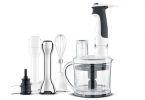“Going green” begins with adopting the right mindset. All you need is the desire to change your habits of appreciating the world around us. But making eco-friendly decisions – and acting accordingly – can be easy. It takes a lot of work and planning to implement relevant changes to your home and lifestyle to make a difference. Fortunately, we’ve done some research for you when it comes to finding the best kitchen compost bins on the market.
Here are the 10 Best Compost Bins in India.
Let’s take a look at the Best Compost Bins!
No products found.
Finding the best was next up on our list of challenges. After several hours of testing, we decided on a few models that we think are suited.
Here are the Top 10 & Best Compost Bins in 2021
No products found.
Picking the Perfect Indoor Compost Bin

When deciding which indoor compost bins will work for you, there are several things that you should consider.
- How much room would you like to dedicate in your home?
- What kind of compost are you actually looking for?
- How much effort are you willing to expend?
A compost bin is an investment, and you want to make sure that you are picking one that will work in your home and be useful for you. Let’s start this selection process by going more in-depth into the different things you should be considering.
What Size Compost Bin Do You Need?
The first thing that you should make sure to carefully think about is how large you would like your compost bin to be. While some compost bins are compact enough that they can fit underneath kitchen sinks, others require larger amounts of space, and should instead be placed in pantries or closets.
Additionally, do you plan on being able to pick up and carry your compost bin to a larger composting area such as an outdoor compost bin or tumbler, or would you like it to be completely self-sustaining and semi-permanent?
Many of these questions will be answered by your living constraints, but it is important that you have these answers before you start officially looking for one to purchase.
Composters that use worms typically take a lot more space in your home than a bokashi pail would, but you’ll also be able to produce a lot more compost with them that’s ready to use in your homemade potting mix. An electric composter like the Food Cycler takes very little room but doesn’t produce traditional compost.
What Kind of Compost Do You Need?
Different composting methods produce different types of material, so let’s talk about what you’re actually looking for.
A basic hot compost pile requires a lot of work and takes up space in the back yard. As “brown” and “green” materials break down, they cause a heat reaction that breaks down the material. You’ll need to go out and turn these piles to ensure even composting. A compost tumbler can make it easier to turn, but won’t be able to process as much material and may not heat up enough. The resulting product from a hot composting method is what you typically spread around plants as a mulch or use to lighten up heavy soils.
By comparison, indoor composter methods are all cold-reaction processes. Bokashi essentially ferments the waste products, breaking down their structure so that once they’re added to the soil they disappear in a matter of days. Worm composting uses worms to consume waste. The worms then excrete castings, a fine-particle material that is used as part of potting blends.
If you’re looking for larger-particle composts that can be used to mulch around plants, indoor composting methods may not produce what you’re looking for. But that doesn’t mean that the composts they produce aren’t useful! In fact, worm castings are specifically sought out by most home gardeners, and bokashi can be extremely effective at fertilizing your planting areas or improving clay soils.
If using a Food Cycler, you’ll find that your product isn’t actually composted. Instead, it’s dehydrated and chipped up. But this material can be buried in soil and will decompose over time. It’s a fantastic source of homemade fertilizer, though!
How Much Work Will You Need To Do?
With traditional composting methods like hot compost piles, there’s a lot of physical labor that goes into it. You’ll be turning your pile at least once a week to aerate it and maintain its heat.
But with most indoor methods, most of your process is in gathering your kitchen waste and preparing it. The finer you can chop fruit or vegetable waste, the faster that worms will eat it. Similarly, finer materials will take less time to ferment in a bokashi bin.
You don’t absolutely need to do the extra work, though. I’ve watched worms eat whole pumpkins gradually over time. In fact, here’s a great time-lapse of a worm farm doing exactly that!
Bokashi composting requires you to drain off any liquid every couple days, and then when your bin’s full you set it aside for a couple weeks to finish fermenting. You’ll then need to dig a hole to bury your material in. But it will decompose in virtually any soil. I know people who have a large plastic bin full of garden soil that they put their bokashi into to finish the decomposition process. It improves the soil quality and the waste basically disappears.
In a worm composter, you’ll eventually need to harvest your finished castings for use, but you can do that right when you need them and store them in the composter until then.
How Does Composting Work?
Bacteria make up 80 percent to 90 percent of the microorganisms that do the work of breaking down refuse in your compost bin. So while it may seem simple enough to just heap the debris on a pile and wait for it to change into soil, a very complex process needs to happen for the material to breakdown.
Microorganisms devour the waste on a cellular level, creating water, carbon dioxide and the most important ingredient, heat. A healthy compost pile will heat up to about 140 degrees at its core as the microorganisms do their work.Cold Compost vs. Hot Compost
Cold compost is made by piling up materials and letting them break down for a year or two with an occasional turn if possible. It is susceptible to weed and seedling growth which can impede some of the organic composting process. Cold compost is typically created in compost piles or heaps placed out in the open with no containers.
Hot compost comes from a compost pile constructed with a balance of nitrogen-rich and carbon-rich materials that are turned regularly, at least once every week or two. It is also kept evenly moist with occasional watering. Hot compost becomes very hot to the touch due to the organic breakdowns constantly occurring, killing weed seeds and many disease pathogens.Stages of Composting
When the materials are first heaped together in a compost bin or pile, they begin the mesophilic stage. During this time, the temperature of the core will begin to rise, and microorganisms will start to form colonies and multiply within the pile. The mesophilic stage lasts for less than a week, and during this time you should see your compost “sag,” or settle.
The second stage is the thermophilic phase; this stage sees your compost getting up to 140 degrees Fahrenheit. When organic materials reach that temperature, seeds from weeds are killed, harmful bacteria die off and the pile starts to break down rapidly. The thermophilic phase can be assisted by making sure your compost pile is damp. A popular rule of thumb is that it should be as wet as a wrung-out sponge. There should be sufficient air reaching the core of the pile.
Turning the pile once or twice during this stage will help get oxygen to the center, and turning the garden hose on the pile will supply enough water to keep the heat in. This stage can last up to three months depending on how much attention you pay to the heap, what you are trying to compost and what sort of bin or pile you are using.
The final stage of composting is known as the cooling stage. This is where the compost matures and the pile settles into a uniform mix. This can take up to four months. Turning occasionally is important. During this final stage, you may want to begin a second compost location and refrain from adding to the near-complete one.
Your compost is ready to use when it is a rich brown color, earthy smelling, free of large pieces of debris and has a crumbly consistency.
CONCLUSION
So in the quest to find the best composter, the clear winner has to be the Hot Frog Dual Body Tumbling Composter. It combines both the ability to trap heat as well as aeration due to the tumbling and ventilation holes. As explained above, both of these features help to break down compost quicker and easier.
This composter is also ideal for gardens where pests could be a problem as it is raised off the ground and sealed. It has a durable, powder coated steel frame and UV resistant plastic barrel so it is ok to be left outside all year round. So if you’re looking for the best composter on the market, hopefully this article has helped you make your choice!







Leave a Comment